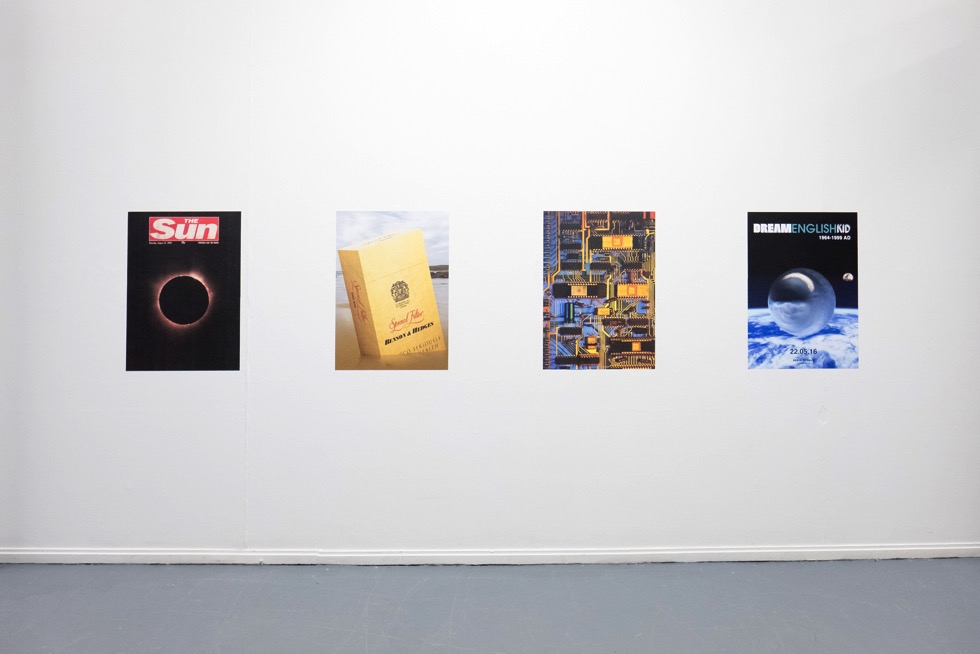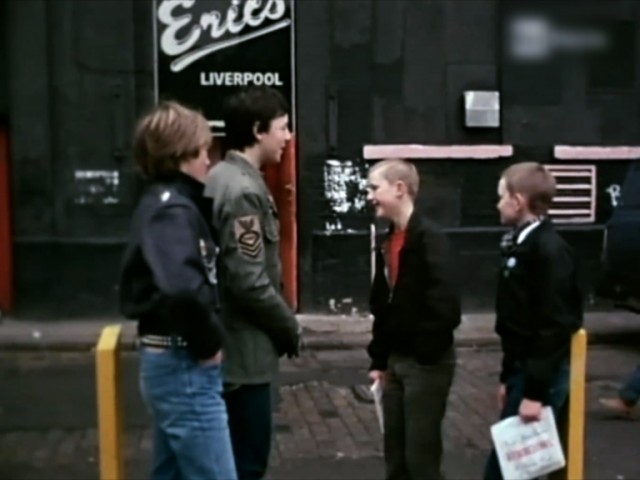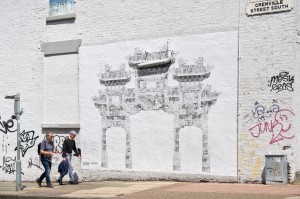“To craft something so meaningful from such chaos is a remarkable achievement”: Dream English Kid — Reviewed

Mark Leckey’s current exhibition in Leigh visualises apocalyptic visions of the Cold War, to claustrophobic and joyous visions of club culture, finds Jack Roe…
The Turnpike in Leigh is in a moment of transition. Described as “the last surviving purpose-built gallery in the borough of Wigan”, it is situated in an area which, according to the latest available census figures, is home to nearly 320,000 people. In context, providing a singular cultural access point to such a large catchment area, this place is precious.
The mood at the unveiling of Turner Prize-winning artist Mark Leckey’s (b. 1964) exhibition Dream English Kid – part of Liverpool Biennial’s Touring Programme – is appropriately celebratory, as there is tangible excitement at providing a relevant platform for such a well-regarded artist. Playing on vinyl in the gallery is the soundtrack to Fiorucci Made Me Hardcore (1999); given a new lease of life on Jamie XX’s 2014 track All Under One Roof Raving, this is arguably Leckey’s defining work to date. It is a nod to the music culture that has informed so much of his career. Leckey’s subversive and arresting print work, including Three Letter Threnody (2016), is arranged around the walls; the focal point and exhibition namesake, Dream English Kid 1964-1999AD (2015) is hidden from view in a temporary room, the presentation reminiscent of a cinema. It is immediately clear that there is more to the night’s proceedings that simply transposing a piece of art from one place to another; this has the feel of something more significant.
In conversation with Liverpool Biennial’s Education Curator, Polly Brannan, and The Turnpike’s Director Helen Stalker (read our Introducing feature here), things begin to take on a clearer shape. There is a resonance here between the work and the locale. Stalker talks of the similarities between Leigh and where Leckey grew up, Eastham, Ellesmere Port; describing them both as “a small place that looks in on a bigger place”. Stalker goes on to suggest that the area provokes intrigue in practitioners. “These places”, she says, “[are] built on the landscape of the leftovers of the mining industry, and how a place like this functions and how it fares and how it regards itself, I think artists find it really interesting.”

According to Brannan, the choice to work with The Turnpike was an easy one; fuelled in part by a story that has taken on mythical proportions locally of a doomed attempt by Factory Records’ Tony Wilson and Bill Drummond to host a music festival in Leigh the late 1970s. Due to be headlined by Joy Division, their efforts eventually fell flat in the face of a regional rail strike, leaving some of the most influential and well-regarded musicians in the country to play for crowds of around 30 people. The stories and idiosyncrasies of this place are well known, and having grown up in similar environs as these, the sense of shared history is familiar. Every place has a story, and the search for a post-industrial British identity is a theme that is common to many in the North.
But what of the work itself? Dream English Kid 1964-1999AD is a beguiling piece, one that uncoils and surrenders its narrative slowly; a dizzying and somewhat surreal collage of archival soundscapes and familiar, if intentionally warped, imagery. This is an examination of the self through a paradoxically distant lens; a discussion of the effect of external stimuli on the formation of a psyche. The title, while plaintive, is cuttingly clever. Leckey identifies as English, which, in a work as personal as this, is telling. A unified notion of “Englishness” is problematic, as so much of culture has benefitted from a symbiosis with cultures elsewhere that it can be difficult to identify a work of art as inherently English, at least in recent history. At tangible odds with the other constituent nations of Britain and elsewhere, there is less of a focus on folk traditions, roots that can be used as identifiers. There is something akin to apologism inherent in contemporary Englishness, a slight shedding of imperial skin.

With that in mind, how exactly does one go about defining an English kid? If this is a framing question then it is one that is handled delicately, despite a barrage of imagery that can, at times, threaten to overwhelm. The strands of childhood and pre-pubescence are recognizable, despite being obfuscated by the form; fractured memories of events that took place before the tools needed to understand them were developed. The infantile discovery of music; the first flush of physical desire; isolation. Ian Curtis looms large over the middle section of the film, the clearest and most defined cultural reference point in the piece – both highly pertinent to the artist and also universal. Idol worship is a recurring adolescent theme, and Joy Division and Curtis are short hand in Dream English Kid 1964-1999AD for something larger. They are interchangeable, depending on experience – fill the gap with a Kurt Cobain or a Basquiat.
That interplay between universality and personal experience is a central tenet of what makes Leckey’s film work so well. We are being invited to witness as someone sifts the vegetable waste of their youth, in the hope that the pressures of time and changing perspectives have colluded to create something more precious. It is hard to argue, on this evidence, that they have not. To craft something so meaningful from such chaos is a remarkable achievement, and the subject matter is far-reaching; from apocalyptic visions of the Cold War, and fears about the Y2K, to claustrophobic and joyous visions of the club culture that provided some release. Dream English Kid 1964-1999AD is astonishing as a meditation, and effective as an historical document.
As for the resonance between the work and its current home suggested by those behind the scenes, I do not refute it. It is hard to imagine that anyone who has spent time on the fringes of England’s urban centres would fail to sense the empathy between the work, the community and the artist himself. The English experience may be a difficult one to convey effectively, but here at least – through Leckey – the reflection is accurate.
Jack Roe
See Mark Leckey’s exhibition Dream English Kid at The Turnpike, Leigh, until 26 August 2017 — FREE
This original article has been co-commissioned by Liverpool Biennial and The Double Negative to celebrate the Biennial’s Touring Programme in 2017-8. The tour sees artworks by leading international artists who exhibited at the 2016 Biennial travel to six different locations in Northern England: Barnsley, Brierfield, Bury, Leeds, Leigh and Rochdale. Read more here
Images, from top: Exhibition view of Mark Leckey: Dream English Kid 1964–1999 AD at The Turnpike. Photo: Pete Carr © Liverpool Biennial. Latter two images: Mark Leckey, Dream English Kid, 1964–1999 AD, 2015 (film still). Image courtesy the artist and Cabinet London. Feature portrait: Mark Leckey, 2015. Photo: Pete Carr © Liverpool Biennial





